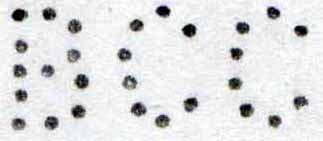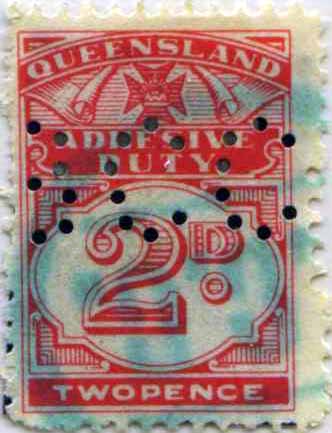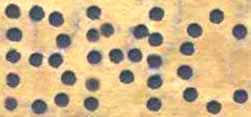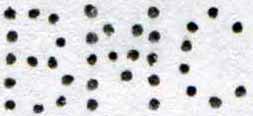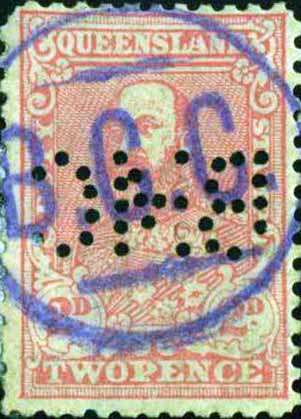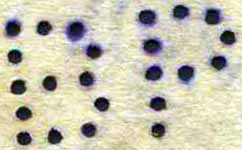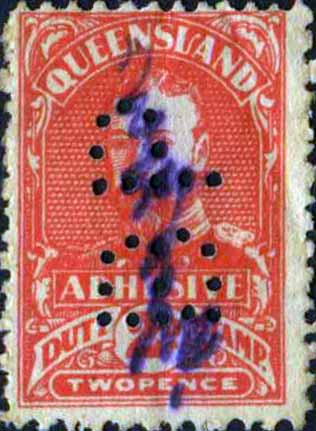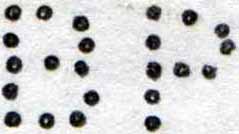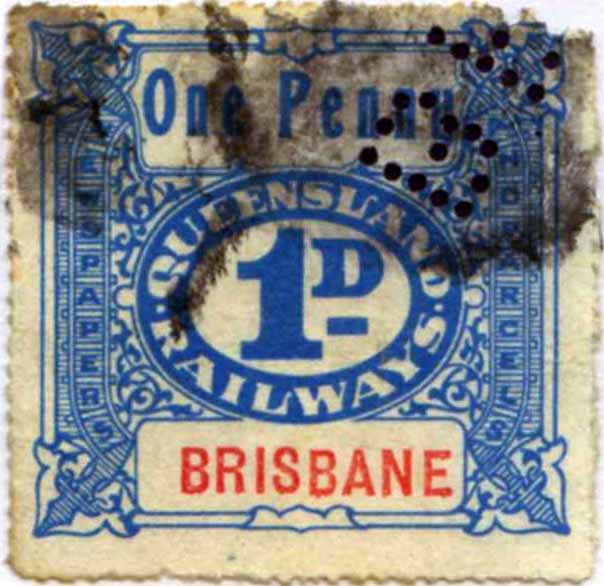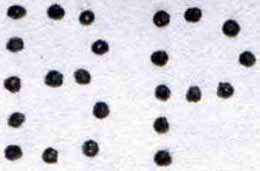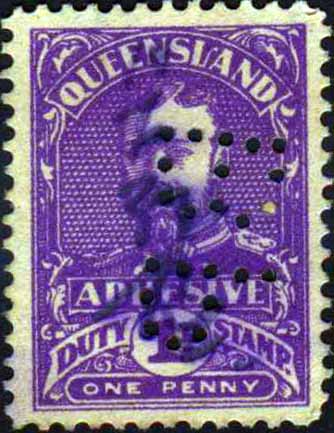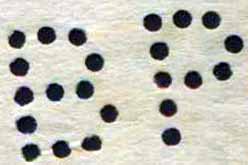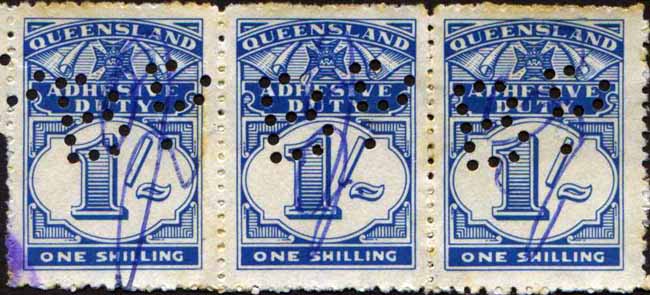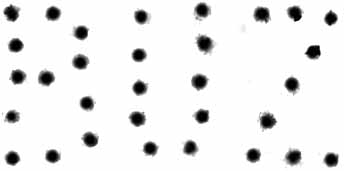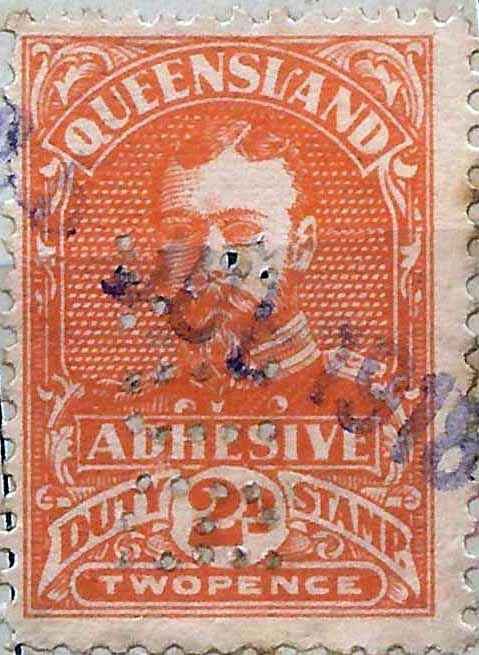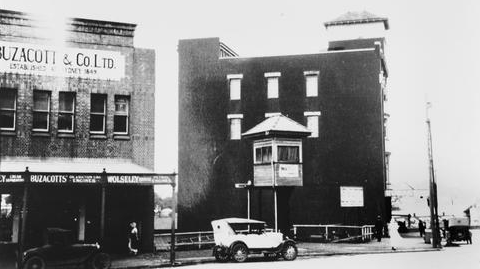|
Private Revenue Perfins of Queensland An Elsmore Coath production The authors would welcome your comments additions or input into this work
B -------------------------------------------------------- BCC.a User: Brisbane City Council Municipal Council / Local Government Brisbane City Hall, King George Square, Brisbane, QLD Revenue Use: KGV 1920 issue 1d, 2d. KGV 1926 issue 1d, 2d, 3d. Numeral 1936 issue 1d, 2d, 2d (security backprint) Rarity Scale KGV 1920 issue 1d R2, 2d R2. KGV 1926 issue 1d R2, 2d R4, 3d R4. Numeral 1936 issue 1d R4, 2d R4 2d (security backprint) R4 Background: *Brisbane City Council (BCC) was
formed by the Queensland State Governments “City of
Brisbane Act” in 1925. The act amalgamated some 20
small councils. Unlike other major Australian cities where
the City Council administers only the Central
Business District, the BCC looks after the largest
part of the Brisbane Metropolitan area. The population in the area of the BCC is
roughly equivalent to the combined populations of
Tasmania, Northern Territory and the ACT. Device: The BCC device was most likely a
single head device. It came into use about 1926 and
its use would have overlapped with the device that
preceded it, that is BMC. Because of the narrow
nature of Queensland revenues of the period the BCC
pattern is often found as a partial and may appear
as CC B or the like. The BCC device is also found on postage
stamps over the period 1926-1940. Related patterns: Refer to other Brisbane
Council patterns as follows: QLD: BMC.a Brisbane Municipal Council Other – Section 2 Precancelled Overprints BBC.a *Brisbane City Council. -------------------------------------------------------- BMC.a Reversed User: Brisbane Municipal Council Municipal Council / Local Government Address: Brisbane City Hall, King George Square, Brisbane, QLD Revenue Use: KEDVII 1901 series 2d, 3d, 1/-, 2/6d. KGV 1920 issue 1d, 2d. Rarity Scale: KEDVII 1901 issue 2d R4, 3d R4, 1/- R4, 2/6d R4. KGV 1920 issue 1d R4, 2d R3. Background: *In 1859 Queensland
separated from New South Wales and became a Colony
in its own right. At this time Brisbane was
proclaimed a municipality and the Brisbane Municipal
Council (BMC) was established by the later
“Municipal Institutions Act” of 1864.
Following the Local Authorities Act of 1902
Brisbane was proclaimed a City and the Governing
body was re-titled the Brisbane City Council
(BBC). The area administered by the BMC and later
BBC was the Brisbane City Centre and the immediate
surrounding suburbs. This was increased in 1925
following the City of Brisbane Act of 1924. Device: Despite the known timing of these name changes, in the early 1900’s the Council sought a perforating device with the letters BMC and this was used from the early 1900’s. Below taken from 'The Brisbane
Courier' Tuesday 23 January 1900 The BMC.a device was most likely a single head device as strikes from adjoining stamps do not show any consistent relationship to each other. The pattern is rather wide and when applied to the contemporary revenue stamps, such as the Edward VII and KGV issues of Queensland, it barely fits across the stamp in position 1 and therefore it is often found in position 2. Early examples of the pattern, up until about 1926, are characterised by clear and complete strikes with slightly thicker holes and it seems that around this time (1926) the device was altered and thinner pins installed. These pins were not as robust as the earlier ones and over time the device starts to show consistent missing pins, particularly in the middle section of the M. Examples of the pattern on revenue stamps often also carry the BCC overprint. The
BMC device is also found used on postage stamps of
Queensland and later Australia from as early as
1901 until at least 1928. Early use and late usage
on postage stamps is rare and the pattern is more
common on the KGV issues of 1916-1921. Related patterns: Refer to other Brisbane
Council patterns in: QLD: BBC.a Brisbane City Council Other – Section 2 Precancelled Overprints BBC.a * Brisbane City Council website. -------------------------------------------------------- BP.a User: Burns Philip and Company Ltd Shipping, Coastal/Island Trading and Retail Address: Cairns, QLD Revenue: KGV 1917 issue 1d horizontal, 2d up, 3d. Rarity Scale: KGV 1920 issue 1d R4, 2d R4, 3d R4. Background: James Burns arrived in Australia
from Scotland in 1862 and after being involved in
his brother’s retail business in Brisbane he moved
to Townsville and established his own business
(retail/wholesale) in 1872. In 1874 he met
another Scottish immigrant, Robert Philip, who he
later took as a partner. In 1882 the partnership was
converted into a corporation and Burns Philip and
Company Ltd was formed. Burns Philip’s interests expanded to include
coastal trading and shipping, around Australia and
into much of the South Pacific. This necessitated
the establishment of many remote offices, some of
which were provided with perforators. Device: This device was located in
Cairns were Burns Philip had offices at the wharf's
(and possibly in Cairns proper). It is a single head
device quite similar to the BP.b and BP.d devices
that were used in the Burns Philip Brisbane office. The Cairns office of Burns Philip was known
to have applied to use a perforating device in June
1918. This application was most likely for a very
short lived BP device (BP.7 HAPP) which is not
reported used on revenue stamps. This approval then
seems to have be applied to the use of this BP.a
device and the later BP.c devices used in Cairns. This BP.a device is also known on postage
stamps from 1927-1940. Related Patterns:Refer to other Burns Philip
patterns in: QLD: BP.b BP.c BP.d NSW: BP.a -------------------------------------------------------- BP.b User: Burns Philip Company Ltd Shipping, Coastal/Island Trading and Retail Address: 133 Mary St, Brisbane, QLD Revenue Use: Numeral 1d, 1d (security backprint). Rarity Scale: Numeral 1d R3. 1d (security backprint) R4. Railway Usage: 1927 issue 1d, 1/-. Rarity Scale: 1927 issue 1d R3. 1/-R4. Background: See BP.a Device: A single head device. The strike of
this pattern is often found punctured diagonally
across the stamp which suggests that it was set up
into the device on a slight angle; 15-20 degrees
from the horizontal and angling upwards from left to
right. However because it is a single head device
and stamp multiples could be folded under the head,
there are a wide variety of angles and directions
are found. The other characteristic of the pattern is
the close proximity of the 2 pins in the top right
hand corner of the P and they are often seen
joined. It is unusual to see pins so close
together in a pattern and this aspect of the pattern
may have been the result of a repair to an earlier
device. The application and approval for this
Brisbane BP device was in July 1920 yet I can find
no evidence of BP.b usage this early. There are some
strikes found of a similar device dating from around
1920 and it may be that this was the original device
that was repaired/altered to give us the BP.b
pattern. To date none of these earlier patterns have
been found on Revenues. Both the BP.b pattern and its possible
earlier form are found on postage stamps. Related Patterns: Refer to other Burns Philip patterns in: QLD: BP.a BP.c BP.d NSW: BP.a BP.c BP.d -------------------------------------------------------- BP.c Pattern Position 8. Reversed Side Down User: Burns Philip and Company Ltd Shipping, Coastal/Island Trading and Retail Address: Cairns, QLD Revenue Use: KGV 1920 series 1d. Numeral 2d. Rarity Scale: KGV 1920 series 1d R4. Numeral 2d R4. Background: See BP.a Device: A single head device located in
Cairns. Most likely this device replaced BP.a in
about 1941 as their usages do not overlap. The pattern is also found on postage stamps
from 1941-1948. Related Patterns: Refer to other Burns Philip patterns in: QLD: BP.a BP.b BP.d NSW: BP.a -------------------------------------------------------- BP.d User: Burns Philip and Company Ltd Shipping, Coastal/Island Trading and Retail Address: 133 Mary St, Brisbane, QLD Revenue Usage: Numeral 1926 series 2d, 3d, 1/-, 2/-, 5/- Rarity Scale: Numeral 1926 issue 2d R2, 3d R2, 1/- R2, 2/- R4, 5/- R4. Background: See BP.a Device: Most likely a single head device. As
with BP.b (Brisbane), the punch head of the
device was set up on an angle of about 15-20 degrees
from the horizontal. This means that you will find
many patterns at a variety of angles across the
stamp. Most likely this device replaced BP.b in
about 1947. The pattern is also found on postage stamps. Related Patterns: Refer to other Burns Philip patterns in: QLD: BP.a BP.b BP.c NSW: BP.a -------------------------------------------------------- BUZ.a
User: Buzacott (Qld) Ltd Machinery Merchants Address: The company occupied a number of locations in Adelaide St, Brisbane, QLD for Offices, Showrooms and Factories as follows: 1912: 118 Adelaide St Brisbane, Petries Blight, Brisbane, QLD 1916-1924: 413-415 Adelaide St, Petries Blight, Brisbane, QLD 1920's(late)-1948: 433 Adelaide St, Petries Blight, Brisbane, QLD & 373a Adelaide St, Petries Blight, Brisbane, QLD 1951: 113 Adelaide St, Brisbane, QLD & Goodwin St, Kangaroo Point, Brisbane, QLD Revenue Usage: KGV 1917 issue 2d. Rarity Scale: KGV 1917 issue 2d R4. Background: *The Buzacott group of
companies were founded in 1849 by A B Armstrong, who
had an engineering business at 9 Market St, Sydney.
Armstrong’s daughter Sarah married Walter Buzacott
in 1862 and in 1864 he joined as a partner. Walter Buzacott had two sons, Ernest and Walter (jrn) and both worked in the business and in 1890 the company was renamed Buzacott & Company and later in 1902 was restructured as Buzacott & Company Ltd with Earnest as Chairman and Walter (jrn) as Director. Walter (snr) died in 1916. At this time the company became involved in engine manufacturing as agents for the Hercules Engine Works (USA). The company grew to become respected manufacturers and suppliers of small stationary engines (1-12 hp) as well agricultural components and equipment such as fences, gates, pumps, wool presses, elevators, corn crushers and chaff cutters. There range included the well-known; "Cyclone" fencing. In the early 1920s Buzacott & Co Ltd formed, Rosebery Lanolines Pty Ltd, Rosebery Engine Works Ltd, and formalised the company, Buzacotts (Queensland) Ltd, the main user of this device. Buzacotts (Queensland) Ltd, had been established as a branch office at Adelaide Street Brisbane in 1911. By 1940 Buzacotts (Queensland) also had branches in Townsville, Cairns, Mackay and Rockhampton but in 1957 Buzacotts (Queensland) was bought out and ceased to trade. By the late 1920s Ernest’s son Alan
(born 1899) was taking a leading role in the company
as chief engineer at Rosebery Engine Works Ltd. This
company was the engine and pump manufacturing
division of Buzacott & Company Ltd, but they had
become the centre of the Buzacott group of
companies. Device: The BUZ.a device is in a single die format. It is found only very rarely on revenue stamps of Queensland, but it is more often seen on postage stamps of Australia, over the period 1916-1927. Still, given the 12 year period of use, it is somewhat surprising that it is not more common. The records show an application by Buzacott and Company Limited, to use a perforating device, being made in late 1915. This does not mean that usage started this early. It may have, but our research has found that sometimes usage can either pre or post date applications. Use of the device seems to be limited to Brisbane and it is odd that none of the other parts of the Buzacott group of companies chose to purchase perforating devices. Late usage is characterised by poor
strikes. Related Patterns: Other - Section 2 Commercial
Overprints: BUZACOTTS QLD LTD.a William Buzacott Pictures: Courtesy State Library of Queensland
--------------------------------------------------------
© copyright 2011 |
